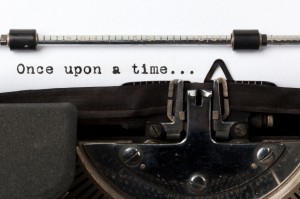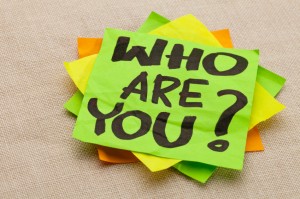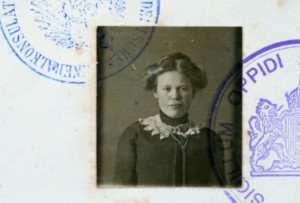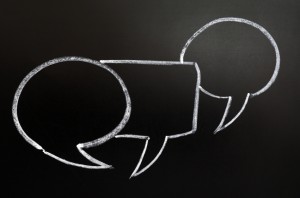This post is by writer, editor, and artist Rick Just. Rick's post explores how fiction authors use historical research to write and present their stories. Many people read and learn about history through historical fiction. I am excited to post Rick’s essay because it expands our conversation about how we can make history more accessible.
In the past, I've written adult contemporary fiction, young adult science fiction, and books on local history. Now I'm using my experience with each genre to write a fiction book for young adults that has a strong historical component.
 The Story
The Story
In The Crappy Used Diary, a 14-year-old named Sam Reed receives a leather-bound dairy for her birthday. Sam's father Chris found the diary while renovating a house from the 1880s. Chris uses the diary as an attempt to interest Sam in history.
Sam is dismayed with the diary; she had wanted an iPhone. Sam wrote about her disappointment in the diary. After writing this entry, she vows never to write in it again.
Several days later, Sam opens the diary to retrieve the pen she had left inside of it. Much to her surprise, she finds an unfamiliar script. Someone has been writing in her diary. Sam reads the entries and discovers that they belong to a girl named Emma Rose Reed who lives 100 years in the past.
Adventure ensues.
3 Ways Fiction Writers Use Historical Research
I conducted historical research for my novel.
Writing fiction almost always requires some research.
I used historical research to inform my story in 3 ways.
 1. Character Names
1. Character Names
It may seem like a small detail, but I consulted census records before I named my characters.
Census records are a great source for finding the most common names for boys and girls throughout history. Some people and organizations have developed databases of common names for different time periods.
I used the census records for the years 2000 and 1900. I chose these records as they would have been the birth years for my contemporary and historic characters.
My use of census records did not stop with my main characters. Like many novelists, I created genealogies for my fictive characters. The fake genealogies helped me create the backstory for my heroines, which in turn helped me to flesh out their lives and personalities.
My fictive genalogies included the names of parents, grandparents, and even great-grandparents. I borrowed a couple of names from my own family tree when I realized that my relatives' real birthdates matched up with the birthdates of my characters.
 2. Context
2. Context
In order to write about 1915, I had to become familiar with the events of 1915.
Emma's diary entries reflect the day-to-day events of her life. To make her entries believeable, I needed context for the larger historical events that occurred on or around the dates of my fictional diary entries.
I consulted online world event timelines to learn about important events that informed Emma's perceptions of the world around her.
 3. Authentic Dialoge
3. Authentic Dialoge
In order to write the dialogue for The Crappy Used Diary, I had to learn more about how teenage girls speak today and how they wrote a century ago.
I listened to my nieces' conversation and eavesdropped in coffee shops frequented by teenagers to learn how present-day teenage girls talk. I also found the Urban Dictionary to be a useful resource. These sources helped me write the dialogue for Sam.
It proved a bit more difficult to capture how the diary's original owner, Emma, would have spoken. Thankfully, the dialogue for Emma is written, not spoken. This meant I needed to find an example, a diary written by a teenage girl ca. 1915.
I contacted the folks at TAG Historical Research in Boisie, Idaho to see if they could help me find a diary from around 1914. Within a half hour, they directed me to the diary of Mabel Claire Nelson in the Idaho Historical Archives.
Nelson kept her diary between 1914 and 1917. Her entries convey many details about her life. I was surprised to find that she underlined words and used multiple exclamation points to emphasize her points.
Nelson wrote about the ordinary details of her life: What movies she had seen and what books she had read. In one entry, Nelson described how she snuck into a revival meeting; she thought the participants hilarious.
Nelson's diary conveyed the writings of a charming, inquisitive girl who had the perfect voice for my character Emma. I quoted only a sentence or two of Nelson's diary in my story, but Nelson's language informed how I wrote Emma's dialogue throughout the book.
It saddened me to learn that Nelson died young at age 17. This knowledge made me very cautious with how I used her words. I wanted to respect Nelson while at the same time give her memory the smallest measure of life in this distant future.
Conclusion
Historical research helps historical fiction authors write credible stories.
If I had not conducted research I might have used 21st-century phrases in an early 20th-century diary entry or late-20th-century names for early-20th-century characters.
Such mistakes would have turned readers off because the names and language would have striked their ears as all wrong.
 Join the Conversation
Join the Conversation
Would you like to contribute to our conversation about accessible history with a guest post? Send me an e-mail.
